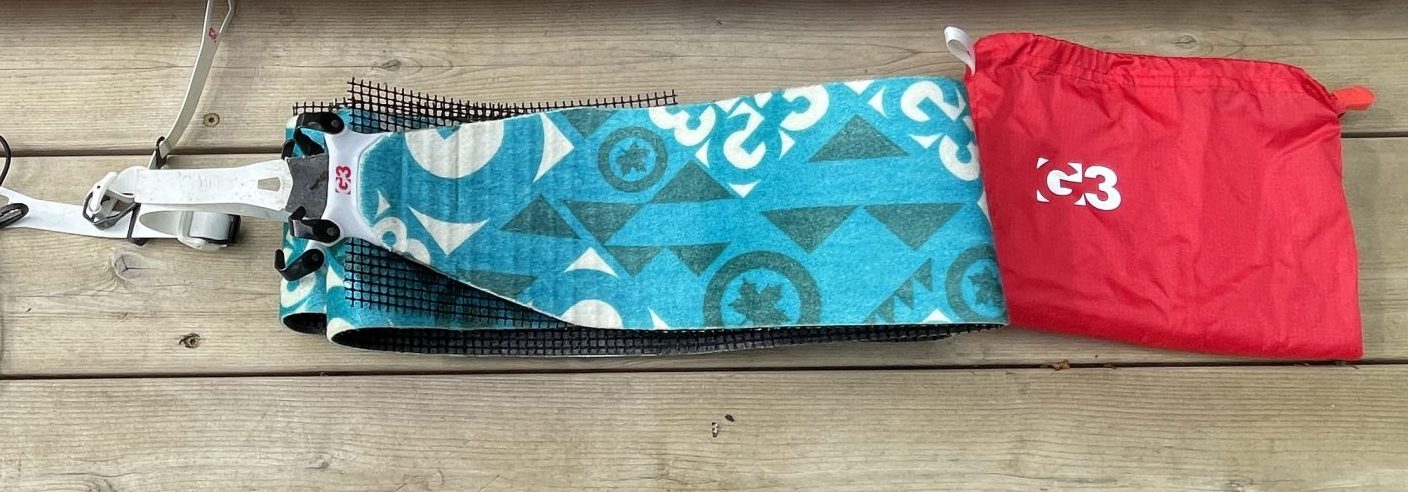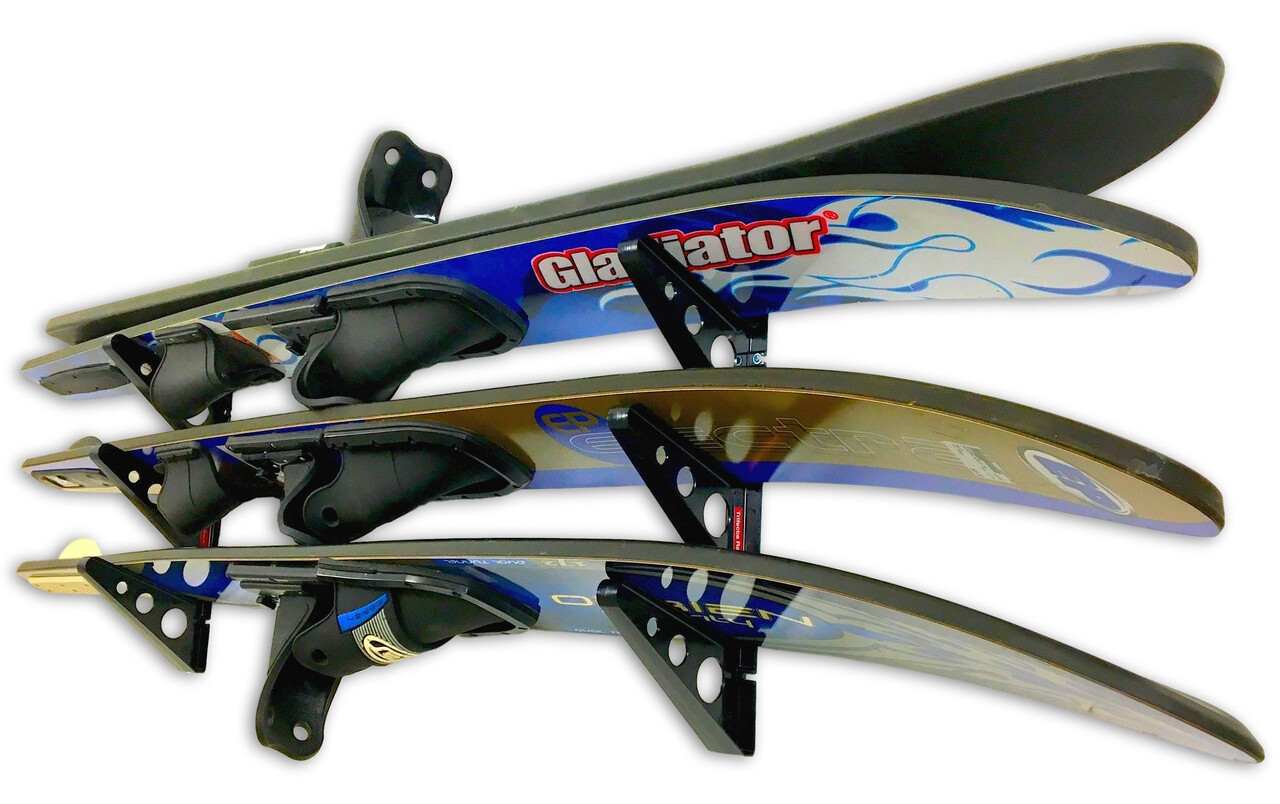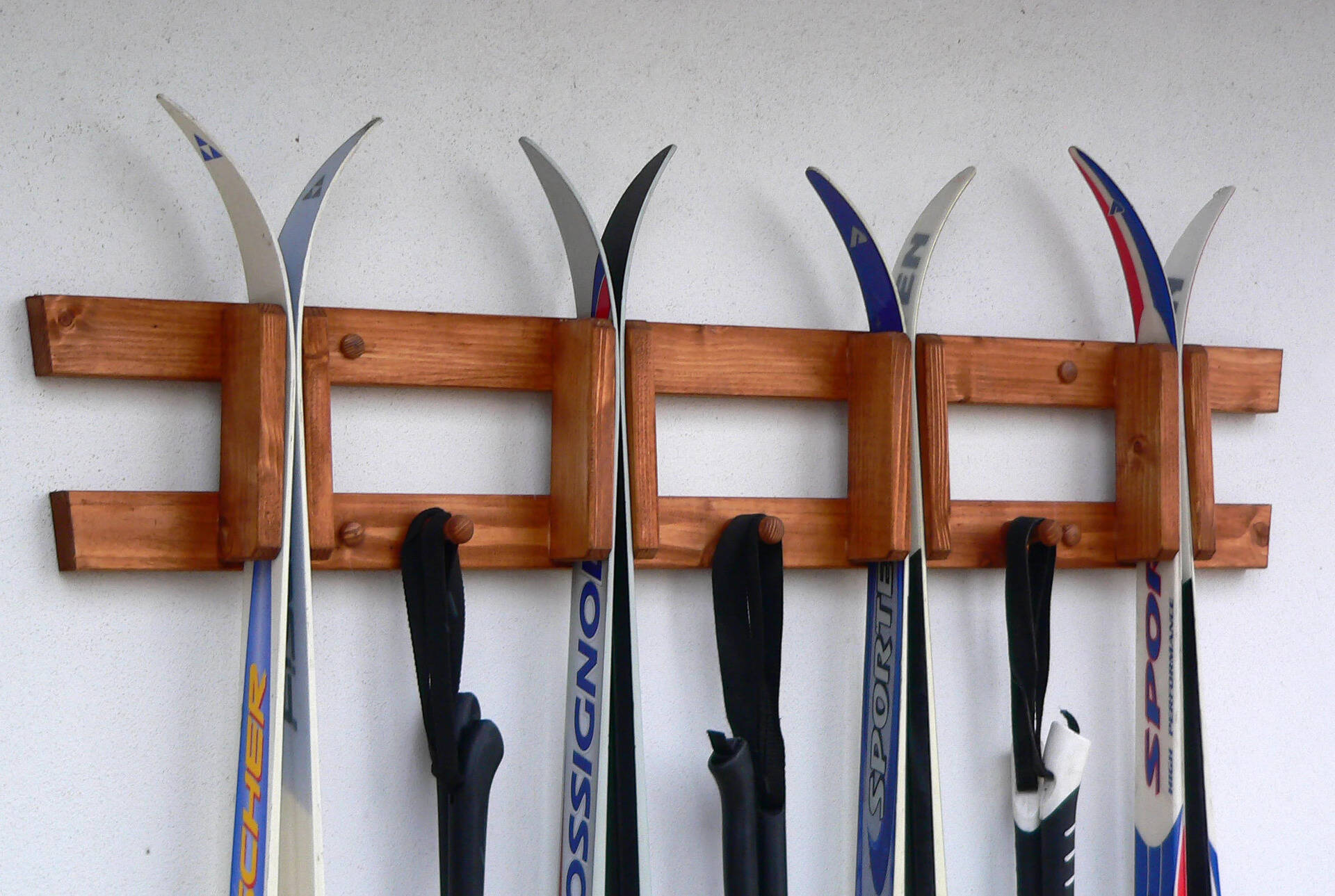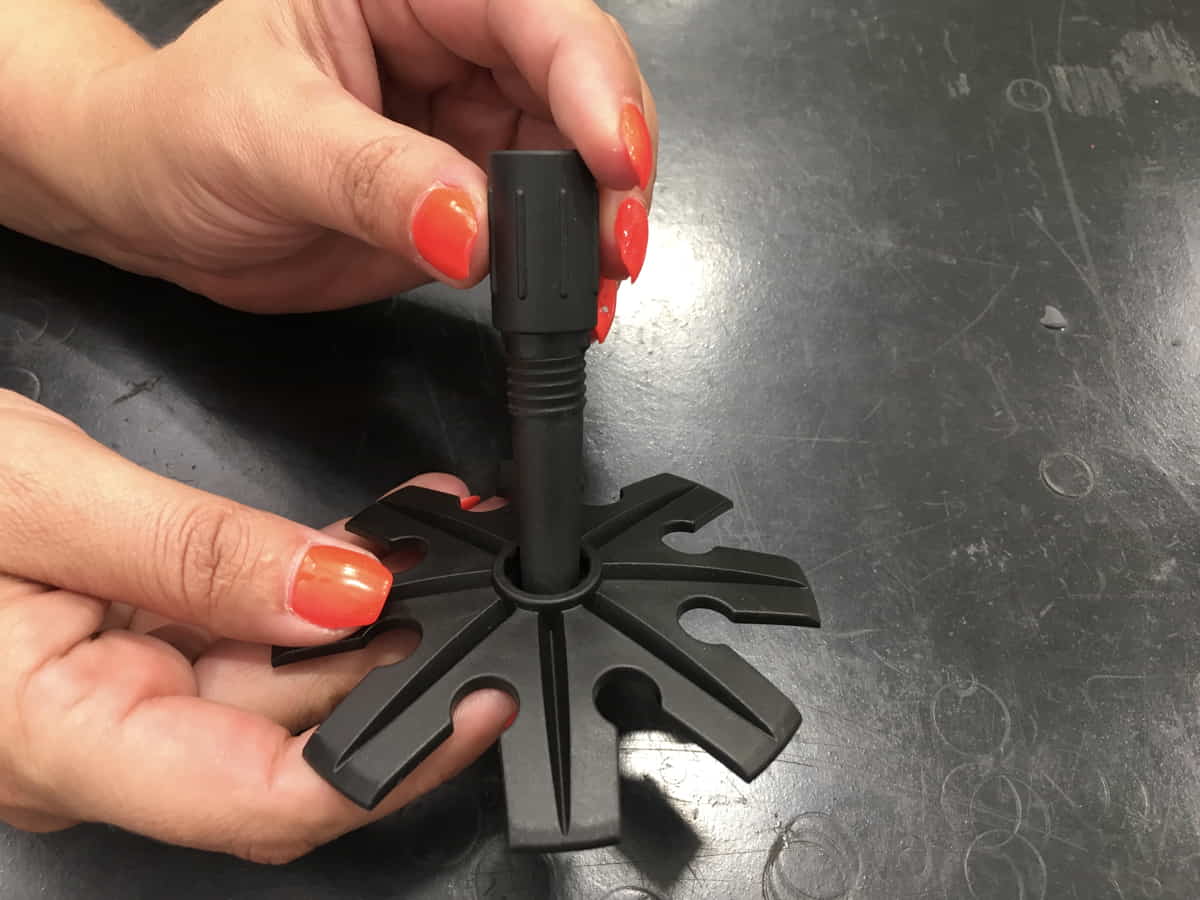

Articles
How To Store Skis
Modified: February 27, 2024
Looking for articles on how to store your skis properly? Find expert tips and advice on storing skis to keep them in top shape and ready for your next adventure.
(Many of the links in this article redirect to a specific reviewed product. Your purchase of these products through affiliate links helps to generate commission for Storables.com, at no extra cost. Learn more)
Introduction
Storing skis properly is essential to maintain their performance and longevity. Whether you’re a seasoned skier or just a casual enthusiast, taking care of your skis during the offseason is crucial to ensure they are ready to hit the slopes when winter arrives again. In this article, we will guide you through the process of storing skis and provide helpful tips to keep them in top condition.
When it comes to ski storage, there are a few key factors to consider: finding the right storage space, preparing your skis for storage, choosing the right storage accessories, and deciding on the best position for storing your skis. By following these steps, you can ensure that your skis are protected from damage, rust, and corrosion, and that they will be in optimal condition for your next skiing adventure.
Before we dive into the specifics, it’s important to note that ski storage is not just for the offseason. Proper storage practices should be followed even if you plan on taking a break from skiing for a shorter period, such as a few weeks. Taking the time to store your skis correctly will prolong their lifespan and save you from any unnecessary repair or replacement costs.
In the following sections, we will discuss each aspect of ski storage in detail, providing you with valuable insights and practical tips to ensure your skis stay in great shape year after year. Let’s get started!
Key Takeaways:
- Proper ski storage is crucial for maintaining performance and longevity. Find a clean, dry, and temperature-controlled storage space, prepare skis with thorough cleaning and waxing, and choose appropriate storage accessories to protect your equipment.
- Whether storing skis vertically or horizontally, proper alignment, regular inspection, and maintenance are key. Avoid common mistakes like leaving skis dirty or not applying wax, and consider long-term storage tips for preserving your equipment.
Read more: How To Store Skis At Home
Finding the Right Storage Space
When it comes to storing your skis, finding the right storage space is essential. Ideally, you want a location that is clean, dry, and free from extreme temperature changes. Here are a few tips to help you find the perfect storage spot for your skis:
- Indoor Storage: Storing your skis indoors is highly recommended. Indoor spaces, such as a garage, basement, or closet, provide better protection from the elements, such as excessive heat, moisture, and UV rays, which can damage your skis over time.
- Temperature Control: It’s important to store your skis in an area with relatively stable temperatures. Extreme temperature fluctuations can cause materials like wood, epoxy, and adhesives to expand and contract, leading to damage and compromised performance. Avoid storage areas that are prone to extreme hot or cold temperatures.
- Dry Environment: Moisture is a skiing gear’s worst enemy. Make sure your storage space is dry and well-ventilated to prevent any moisture buildup. Dampness can cause rust on metal edges and promote the growth of mold and mildew on ski boots and bindings.
- Protective Cover: If you decide to store your skis in an area with potential dust or debris, consider using a protective cover or ski bag to keep them clean and free from scratches. This will help maintain the ski’s overall condition and protect them from any accidental damage.
- Easy Accessibility: Lastly, choose a storage space that is easily accessible. You don’t want to struggle to retrieve your skis when the snow season starts. Having your skis readily available will allow you to start skiing as soon as the weather permits!
By keeping these considerations in mind, you can find the ideal storage space for your skis. Remember, a clean, dry, and temperature-controlled environment is crucial to preserving the quality and performance of your skis, ensuring they are always ready for your next adventure on the slopes.
Preparing Your Skis for Storage
Before you store your skis for an extended period, it is important to properly prepare them to ensure they remain in optimal condition. Here are some steps to follow when preparing your skis for storage:
- Clean Your Skis: Start by cleaning your skis thoroughly to remove any dirt, debris, or excess wax. Use a ski-specific cleaning solution or a gentle soap and water mixture. Scrub the bases and edges with a soft brush, paying extra attention to removing any dirt or grime that may have accumulated during your last skiing session.
- Dry the Skis: After cleaning, make sure to dry the skis completely to prevent moisture buildup. Wipe down the skis with a clean, dry cloth and let them air dry for a few hours, ensuring that both the bases and bindings are moisture-free.
- Wax the Skis: Applying a fresh coat of wax to your skis before storage is highly recommended. This helps protect the bases from drying out and keeps them in good condition. Choose a wax appropriate for the temperature conditions you usually ski in and apply it evenly along the length of the skis. Leave the wax on the skis; do not scrape it off.
- Tighten the Bindings: Check the bindings and make sure they are properly tightened. Loose bindings can cause your skis to shift or move while in storage, potentially leading to damage. If you’re unsure about how to properly adjust the bindings, consult a professional ski technician.
- Remove Ski Boots: It’s a good practice to remove your ski boots when storing your skis. This helps prevent unnecessary pressure on the bindings and maintains the shape of the boot liners. Store your boots separately in a dry and well-ventilated area.
Following these steps will ensure that your skis are clean, dry, and properly protected during their time in storage. Proper cleaning and waxing help preserve the skis’ performance and maintain their longevity, while removing the ski boots reduces any potential strain on the bindings. By taking these precautions, you can ensure that your skis will be in top shape when it’s time to hit the slopes again.
Proper Cleaning and Maintenance
Cleaning and maintaining your skis regularly will not only improve their performance but also extend their lifespan. Here are some essential tips for proper cleaning and maintenance of your skis:
- Wipe Down After Each Use: After a day on the slopes, take a few minutes to wipe down your skis with a clean cloth or towel. This will help remove any snow, ice, or dirt that may have accumulated on the surfaces.
- Monitor and Repair Base Damage: Regularly inspect the base of your skis for any signs of damage such as scratches, gouges, or dings. Small scratches can often be repaired using a P-Tex candle or base repair kit. If you spot any significant damage, consider taking your skis to a professional technician for repair.
- Sharpen the Edges: Over time, the edges of your skis may become dull due to wear and tear. Periodically sharpening the edges helps maintain optimal performance on the slopes. You can either sharpen the edges yourself using a ski edge sharpener or have them sharpened by a professional.
- Apply Wax: Waxing your skis regularly is crucial for maintaining their speed and performance. Apply a fresh layer of wax appropriate for the current temperature conditions before each skiing session. This will help protect the bases and ensure smooth gliding on the snow.
- Store Properly: As mentioned earlier, proper storage plays a significant role in maintaining the condition of your skis. Keep your skis in a cool, dry place away from direct sunlight. Avoid leaning skis against each other or stacking heavy objects on top of them, which can lead to compression and deformity.
In addition to these steps, it’s important to regularly inspect your ski bindings for any signs of wear or damage. Make sure the bindings are adjusted correctly and test their release function periodically to ensure they are functioning properly.
By incorporating these cleaning and maintenance practices into your routine, you can keep your skis performing at their best, prolong their lifespan, and have more enjoyable skiing experiences.
Choosing the Right Storage Accessories
In addition to finding the right storage space and preparing your skis for storage, selecting the appropriate storage accessories is crucial to ensure the safety and longevity of your skis. Here are some essential storage accessories to consider:
- Ski Bag: A ski bag provides excellent protection during transportation and storage. Look for a bag that is specifically designed for skis, with padded compartments to keep them secure and separate from each other. Additionally, choose a bag that is made of durable and water-resistant material to protect your skis from moisture and damage.
- Ski Rack or Wall Mount: If space allows, a ski rack or wall mount can be a convenient and efficient way to store your skis. Look for racks or mounts that have a padded surface to protect the skis and hold them securely in place. This will help prevent any scratches or shifting that can occur when skis are stored horizontally or in tight spaces.
- Ski Sleeve or Cover: A ski sleeve or cover is a lightweight and compact option for protecting your skis during storage. These sleeves are typically made of soft and water-resistant material, providing a protective barrier against dust, dirt, and scratches. They are especially useful if you plan on storing your skis in a shared storage area with other items.
- Binding Covers: Binding covers are small accessories that can be attached to the bindings of your skis. These covers help protect the bindings from dust, debris, and moisture while in storage. They can be easily removed when you’re ready to hit the slopes again.
- Ski Brakes: Ski brakes are another accessory to consider if you choose to store your skis vertically. These attachable brakes can be installed on the skis to prevent them from sliding or falling when stored upright. Make sure to choose the correct size of brake for your specific ski model.
When selecting storage accessories, it is important to choose high-quality options that are specifically designed for skis. This will ensure that your skis are properly protected and that the accessories themselves are durable and long-lasting.
Remember to consider your storage space and personal preferences when choosing storage accessories. Whether you opt for a ski bag, rack, sleeve, or a combination of these options, the goal is to protect your skis from damage and maintain their performance over time.
Store skis in a cool, dry place to prevent rust and damage. Keep them in a ski bag or rack to protect the edges and bases. Avoid storing them in direct sunlight or near heat sources.
Storing Skis in a Vertical Position
Storing skis in a vertical position can be a space-saving and convenient option, especially if you have limited storage space. Here are some tips for properly storing your skis vertically:
- Use a Ski Rack or Wall Mount: Invest in a ski rack or wall mount specifically designed for vertical ski storage. These mounts typically have padded hooks or slots that securely hold your skis in an upright position.
- Ensure Proper Alignment: When placing your skis in the rack or mount, make sure they are aligned vertically and parallel to each other. This helps prevent any unnecessary strain on the skis or bindings.
- Consider Ski Brakes: Ski brakes can be attached to your skis to prevent them from sliding or falling when stored vertically. These brakes act as a safety measure, ensuring that your skis remain in place.
- Avoid Overcrowding: It’s important to avoid overcrowding the ski rack or mount. Leave enough space between each pair of skis to prevent any unnecessary pressure or rubbing that could damage the skis or bindings.
- Store in a Cool, Dry Place: Make sure your storage area is cool, dry, and away from direct sunlight to prevent any damage caused by temperature fluctuations or exposure to UV rays. Excessive heat or moisture can warp the skis and compromise their performance.
- Regularly Inspect: Periodically check on your skis to ensure they are still securely stored and that there are no signs of damage or shifting. If you notice any issues, readjust or replace your storage rack or mount as needed.
Storing skis vertically not only saves space but also reduces the risk of damage that can occur when skis are stacked horizontally. It allows for proper weight distribution and prevents any warping or stress on the ski’s shape and structure.
Remember to regularly clean and maintain your skis, even when they are stored vertically. This includes wiping down the skis to remove any dirt or debris and periodically applying a fresh coat of wax to protect the bases.
By following these guidelines, you can confidently store your skis in a vertical position, knowing that they are protected and ready for your next skiing adventure.
Storing Skis in a Horizontal Position
If you have ample storage space or prefer an alternative to vertical storage, storing skis horizontally is another viable option. Here are some tips for properly storing your skis in a horizontal position:
- Use a Ski Rack or Storage Shelf: Invest in a ski rack or storage shelf specifically designed for horizontal ski storage. These racks typically have slots or grooves that securely hold the skis on their sides.
- Protect the Bases: To prevent any scratches or damage to the ski bases, place them on a soft surface or use foam padding on the rack or shelf. This extra layer of protection will help maintain the condition of the bases.
- Keep Skis Parallel: When placing your skis on the rack or shelf, make sure they are parallel to each other with the bases facing upward. This alignment reduces the risk of any bending or warping over time.
- Don’t Stack Heavy Objects: Avoid placing heavy objects on top of your skis when they are stored horizontally. Excessive weight can cause pressure points that may lead to deformation or damage to the skis.
- Store in a Dry Environment: Ensure that the storage area is dry and well-ventilated to prevent any moisture buildup, which can cause rust on the edges and promote the growth of mold or mildew on your skis.
- Avoid Extreme Temperature Changes: Fluctuations in temperature can affect the materials of your skis, leading to warping or other damage. Choose a storage space away from areas that experience extreme heat or cold.
- Regular Inspection: Periodically check your skis for any signs of damage or shifting. Make sure the bindings are secure and that the skis are properly aligned on the rack or shelf.
Storing skis horizontally provides easy access and allows you to stack multiple pairs, making it convenient for those with larger collections. However, remember to take precautions to protect your skis from any potential damage.
Additionally, it’s important to maintain your skis even when they are in storage. Regularly wiping them down, inspecting for any damage, and applying wax will help to preserve the condition and performance of your skis.
By following these tips, you can confidently store your skis horizontally, knowing that they are protected and ready to hit the slopes whenever you’re ready for your next skiing adventure.
Avoiding Common Mistakes
When it comes to storing skis, it’s important to avoid common mistakes that can result in damage or deterioration of your equipment. Here are some key mistakes to avoid:
- Leaving Skis Dirty: Neglecting to clean your skis before storing them can lead to the buildup of dirt, grime, and moisture, which can cause rust and damage over time. Always take the time to properly clean and dry your skis before storage.
- Not Applying Wax: Waxing your skis before storage helps to protect the bases and maintain their performance. Failure to apply wax can result in drying out of the bases and a loss of glide, especially if your skis are stored for an extended period.
- Storing Wet Skis: Storing wet skis without allowing them to dry completely can lead to moisture buildup, which can cause rust and promote the growth of mold or mildew. Ensure your skis are completely dry before putting them in storage.
- Using Improper Storage Accessories: Using storage accessories that are not specifically designed for skis can lead to damage. Make sure to invest in high-quality ski racks, bags, or sleeves that provide proper protection and support for your skis.
- Ignoring Binding Settings: Failing to check and adjust your binding settings before storage can result in improper release or engagement when you hit the slopes again. It’s important to regularly inspect and ensure that your bindings are adjusted correctly.
- Leaving Skis Exposed to Sunlight: Direct sunlight can cause the skis’ materials to deteriorate, leading to warping, fading, or cracking. Avoid storing your skis in areas where they are exposed to prolonged sunlight.
- Storing Skis Near Heat Sources: Placing your skis near heat sources, such as heaters or radiators, can cause the materials to warp or melt, adversely affecting their performance. Store your skis in a cool and dry area away from any sources of heat.
By avoiding these common mistakes, you can ensure that your skis are well-maintained and ready for your next ski season. Proper cleaning, waxing, and storage practices will help protect the integrity of your skis and prolong their lifespan.
Remember, taking a few extra minutes to properly prepare and store your skis will save you from potential damage and costly repairs in the long run.
Long-term Storage Tips
If you’re planning on storing your skis for an extended period, such as during the off-season, there are some additional tips to keep in mind to ensure the long-term preservation of your equipment:
- Choose a Climate-Controlled Storage Area: Opt for a storage space that is climate-controlled, such as a temperature-regulated garage or basement. Extreme temperatures and humidity can damage your skis over time, so maintaining a stable environment is essential.
- Use Protective Bags or Wraps: Consider wrapping your skis in protective bags or wraps designed for long-term storage. These provide an extra layer of protection against dust, moisture, and other potential damage.
- Store Skis Upright: Storing skis upright in a ski rack or with their bindings facing downward is preferable for long-term storage. This helps prevent excessive pressure on the bindings and maintains the ski’s natural shape.
- Rotate Positions: Periodically rotate the position of your skis to prevent any pressure points or warping that may occur from long-term storage in the same position. This will help distribute the weight and alleviate stress on specific areas of the skis.
- Avoid Hanging Skis by the Tips: While it may seem convenient, avoid hanging skis by the tips or hanging them horizontally by the bindings. This can cause stress and damage to the ski tips or bindings over time.
- Check Skis Regularly: Even during long-term storage, it is important to check your skis periodically for any signs of damage or issues. Look for any warping, cracks, or other abnormalities that may have occurred during storage.
- Consider Professional Storage: If you have valuable or delicate skis, or if you’re not able to provide the ideal storage conditions at home, consider professional ski storage. Ski storage facilities often provide climate-controlled environments that ensure the best conditions for your skis’ preservation.
By following these long-term storage tips, you can safeguard your skis from potential damage and ensure their longevity. Proper storage practices will help maintain the performance and integrity of your skis, allowing you to enjoy them for many seasons to come.
Read more: How To Store Ski Clothes
Conclusion
Properly storing your skis is essential for maintaining their performance and longevity. By following the tips and guidelines outlined in this article, you can ensure that your skis are protected from damage, rust, and other issues that can arise during storage.
Start by finding the right storage space – a clean, dry, and temperature-controlled area is ideal. Prepare your skis by cleaning them thoroughly, drying them completely, and applying a fresh coat of wax. Choose the appropriate storage accessories, such as ski racks, bags, or covers, to provide the necessary protection for your skis.
Decide among storing your skis vertically or horizontally, depending on your space and preferences. Regardless of the position, make sure they are properly aligned, securely stored, and regularly inspected to avoid any damage or shifting.
Avoid common mistakes, such as leaving skis dirty, not applying wax, or storing wet skis. Take care of your skis by regularly cleaning them, inspecting for damage, and performing maintenance tasks like sharpening the edges. Long-term storage requires additional considerations, including climate-controlled spaces, protective bags, and occasional rotation of the skis’ positions.
Remember that proper storage practices not only save you from potential costly repairs but also ensure your skis are always ready for your next skiing adventure. With the right storage techniques, your skis will remain in top condition, providing you with countless hours of joy on the slopes.
By investing a little time and effort into proper ski storage, you can preserve the quality and performance of your skis, allowing you to make the most of every ski season for years to come. So, follow these tips, handle your skis with care, and eagerly anticipate the next exciting skiing adventure!
Frequently Asked Questions about How To Store Skis
Was this page helpful?
At Storables.com, we guarantee accurate and reliable information. Our content, validated by Expert Board Contributors, is crafted following stringent Editorial Policies. We're committed to providing you with well-researched, expert-backed insights for all your informational needs.














0 thoughts on “How To Store Skis”